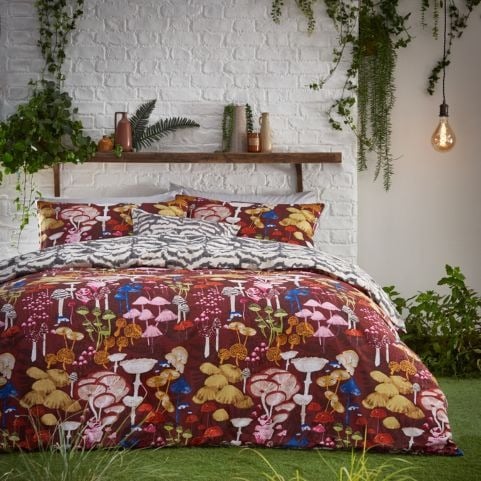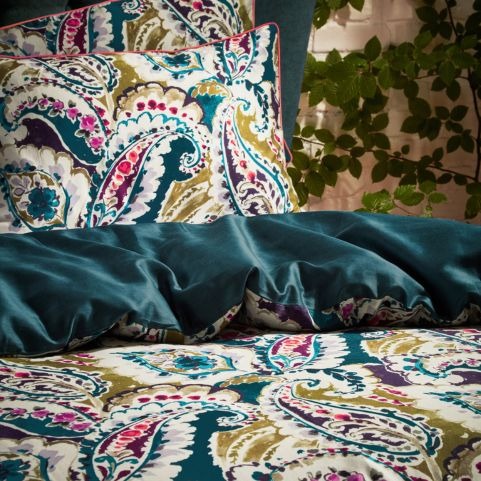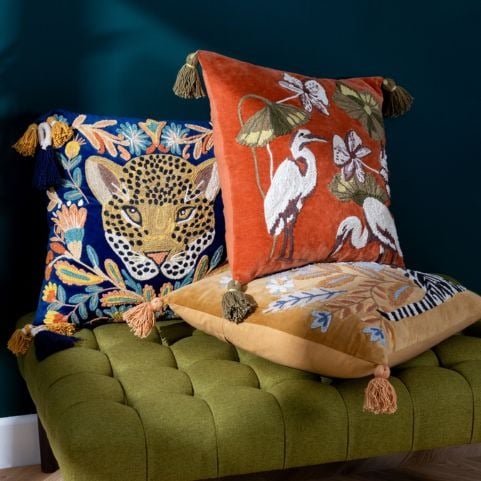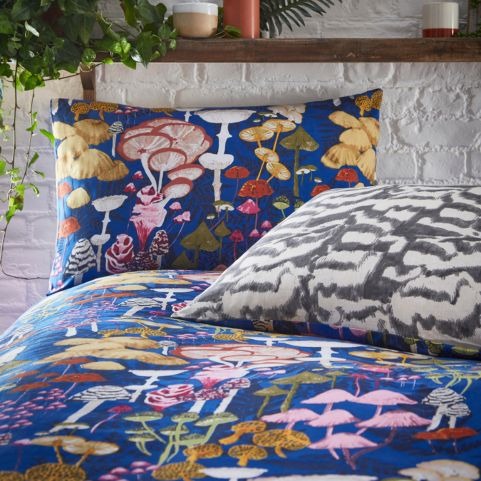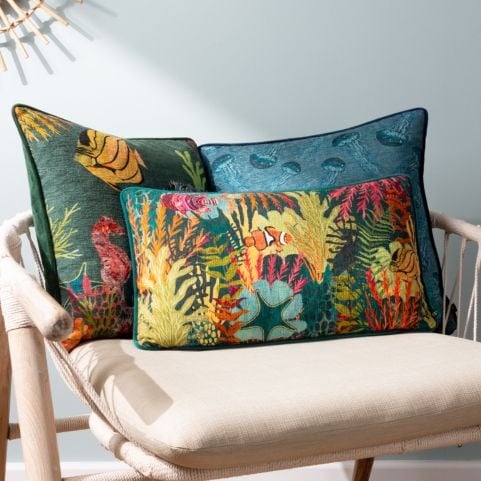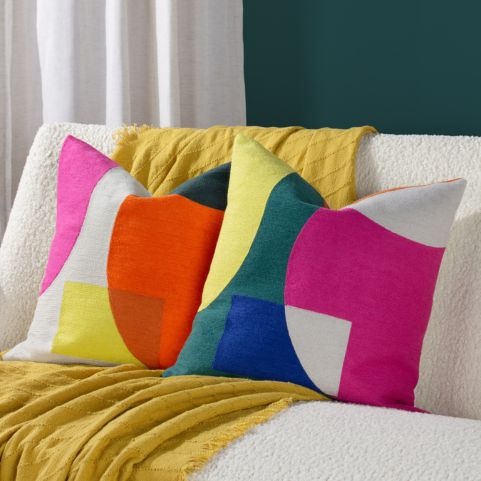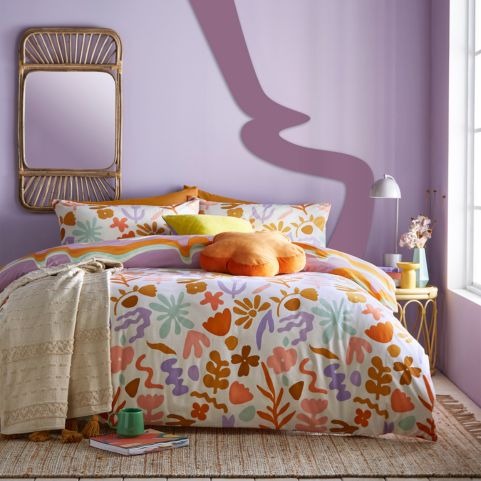“more is more, and less is a bore.” – Iris Apfel, interior icon.
Maximalism is an interior design style that is all about unique self-expression. We’re talking interiors that bring you sheer, unadulterated joy through patterns on patterns, riots of colour and proudly surrounding yourself with all the things that you love.
More is more when it comes to maximalism – but it can be a little intimidating to get started. It’s curation, not clutter, and getting the balance right is tricky.
Often talked about as the antithesis of minimalism, maximalism is truly about the ‘more is more’ movement. Where minimalism is refined and soothing, maximalism is playful, lush and layered – there’s always plenty to look at. When it comes to interiors, you’ll often find mixed patterns, over-the-top ornamentation and colour combinations that delight the senses.
There’s not just one way to be maximalist. Whether your aesthetic tends towards the dark and moody or the bright and colourful, traditional or contemporary, you can be a maximalist – it’s all about the layers of statement elements. Rea, our Studio Manager, considers herself a minimalist-maximalist, “I love colour and print, but my entire house is just black and pink. There’s splashes of colour, pattern and cute bits & bobs that I've lovingly collected over the years too... like my big ceramic leopard, my collection of gold animals, and the big crest I have above my mantelpiece.
"The star of the house though is the guest room, which is wallpapered in Serpentine, with Serpentine bedding and Serpentine cushions with a neon sign.”
Maximalism is by no means a new trend. Historically, the wealthy elite have always been maximalists – just look at Britain’s stately homes. We’re talking patterned wallpaper, gilded accents, art collections, plants and more, all to show off their riches.
But let’s bring it into the 20th century. There are three main design movements that influence what we know as maximalism today.
The 1930’s Hollywood Regency style screams glam, glitz and expensive taste. With a luxe approach to every element of interiors, you’ll see statement lighting, satin upholstery, fringe and mirrors galore – true star quality.
In the 70s, the Pattern & Decoration art movement was a reaction to the clean lines and functionality of Modernism. They saw value in ornamentation, sensuality and pleasure in art – which is one of the main facets of maximalism today. Artwork from this period included bold colours, floral patterns and collage.
The 80s saw the Memphis Design group throw out the rule book when it came to the mainstream interior design of the time. Think neon, pastel and primary colours, bold patterns and geometric shapes, all combined to create an eye-poppingly unusual aesthetic.
Today, maximalism is a combination of eras past – in its modern form, it is a reaction against minimalism.
So how do you take maximalism and use it in your home? There are no hard and fast rules, because maximalist decor is all about what brings you happiness, finding your own two feet in the world of interior design. It’s this that makes it hard to get the balance right between a curated, harmonious feel and just clashing, chaotic clutter.
Layering is one of the most important elements of maximalist interior design. There’s a particular art to layering patterns, as you need to make sure it feels harmonious and not headache-inducing. Luckily, there are a few rules to help you.
Choose patterns that are different sizes, but similar colours. For example, you might choose a large-scale pattern for your walls and a smaller one for throws or cushions. And all in colour schemes that are tonal or within the same colour palette. You can use light and dark to create contrast as well. Contrast is welcome in maximalist designs, but stick to colours that complement each other by checking the universal colour wheel and taking colour theory into consideration.
Of course, if you love a particular pattern, then like our Studio Manager Rea’s Serpentine room, you can just go all in and match everything!
There’s no one way to do colour in a maximalist scheme, but whatever scheme you choose, make it impactful. It could be dark and moody jewel tones for a Victorian take on maximalism, or it could be contrasting colours to make your room playful and exuberant.
Pastels and neutrals aren’t often seen in maximalist schemes, but there’s no reason why you can’t throw out the rulebook!
Experiment with colours you love the most and introduce them through maximalist cushions, patterned throws and other jazzy textiles.
Even your practical pieces can be statement-makers. Think table lamps have to be plain? They can be just as artistic and playful as anything else in your maximalist room.
Your art, ornaments and personal objects should all be well loved or have a history – these are the things that make a house a home. A maximalist interior should be filled with things that evoke a sense of personality, and the more authentic it is to you the better - you can even have fun with maximalist curtains. But you don’t have to spend a fortune to acquire loads of possessions to achieve this look.
"You may find that your interior is ever-growing, and never finished – you add new accessories as you discover them. I think this is what makes maximalism so interesting. It’s a very personal curation of things you love, and often the items you add to your decor have a lot of meaning." - Anna, our Brand Manager.
In maximalism, rules are made to be broken, so, in the wise words of Anna, “if you want to paint your ceiling hot pink, do it! If you want to put zebra print with florals, go for it”.
Not sure where to start? If you want to try maximalism, trust your instincts and don’t get distracted too much by what you see online, as this is your own version you are building. Start by selecting key colours you love, and add in any patterns, textures and shapes you love along the way. If something doesn’t work in one space, try it on the opposite side of the room as you may find things need rebalancing. Key prints like stripes and colour blocks will help you blend styles- too.
Try the smallest room in the house – usually the downstairs loo. It’s small and compact, giving you limits on what you can do. Start with a patterned wallpaper, accessorise with gold and look for highly decorative elements to finish the look off.
Or, paint every wall in your home a new colour – your choice, it’s maximalism after all.
.jpg?v=1706015808572)
